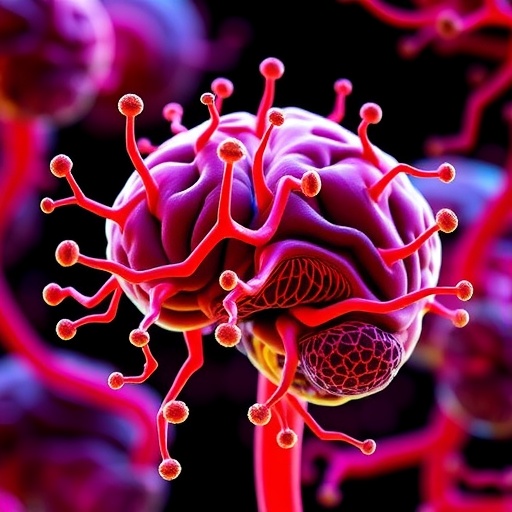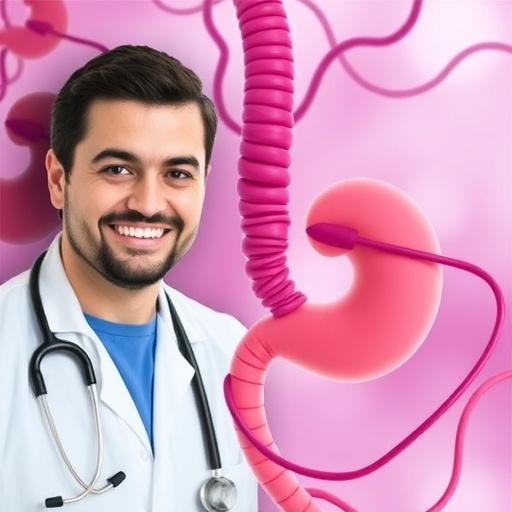Neuronal ceroid lipofuscinoses, popularly known as Batten disease, represent a devastating collection of inherited neurodegenerative disorders, characterized as lysosomal storage disorders. Each form of this disease is linked to mutations within distinct genes, predominantly resulting in lysosomal dysfunction. This malady has largely eluded complete understanding, but it clearly results in severe ramifications for the central nervous system. The shared clinical manifestations and the common characteristic of autofluorescent storage material have led to the grouping of NCLs under the same umbrella; however, these disorders can exhibit significant differences in clinical presentation and pathology due to their underlying genetic diversities.
The pathophysiology of NCLs extends well beyond the confines of neuronal dysfunction. Notably, recent insights indicate that glial cells, essential for maintaining the health and function of neurons, are significantly impacted. Such glial involvement further complicates the landscape of these disorders, as the interplay between neurons and glial cells is critical for cognitive and sensory functions. Evidence suggests that the effects of NCLs are not solely confined to the neurological domain but permeate other organ systems as well, resulting in life-limiting complications in regions such as the bowel. This systemic involvement illustrates the need for comprehensive therapeutic strategies that go beyond targeting neurological symptoms alone.
With recent advancements in gene therapy and enzyme replacement therapy, particularly for CLN2 disease, a newfound hope has emerged for combating this group of disorders. The delivery mechanisms and practicalities surrounding enzyme replacement therapy have provided pivotal lessons for the advancement of clinical application in NCL treatments. This highlights the importance of translating laboratory findings into viable treatment options that could alleviate the devastating impact of these diseases on affected individuals and their families.
As research progresses, substantial strides have been made concerning our understanding of the cellular mechanisms implicated in NCLs. Scientists are actively investigating how lysosomal dysfunction translates to neurodegeneration and psychiatric symptoms, a crucial piece of the puzzle that could unlock new therapeutic avenues. Notably, the accumulation of autofluorescent storage material, a hallmark of NCLs, remains a key focus area, with ongoing studies aiming to decipher its exact role in the pathology of these conditions.
Furthermore, the engagement of multidisciplinary approaches that include genetic, biochemical, and molecular studies is becoming increasingly critical in piecing together the complex web of NCL etiopathogenesis. Emerging evidence suggests that these neurodegenerative disorders may share common pathogenic pathways with other conditions, providing an intriguing perspective that might offer insights into broader treatment frameworks. By examining the intersections between NCLs and other neurodegenerative diseases, researchers could derive innovative strategies that may cross-apply therapeutic targets.
Individual protein deficiencies—resulting from specific gene mutations—demonstrate stark variability within the NCL spectrum. Such discrepancies highlight the necessity of personalized or precision medicine as a means of optimizing treatment plans tailored to the unique genetic profile of each NCL form. Encouragingly, there is burgeoning interest in developing mouse models that faithfully replicate human NCL-like phenotypes, paving the way for potential preclinical testing of novel therapeutic approaches that could revolutionize patient care.
In parallel, understanding the role of neuroinflammation in the NCLs’ progression represents another critical frontier. The involvement of microglia, the brain’s resident immune cells, in the neurodegenerative process could provide a therapeutic target that could potentially slow cognitive decline. By inhibiting neuroinflammatory pathways, researchers hope to foster a neuroprotective environment that could counteract the concurrent degeneration of neuronal and glial populations.
Ongoing clinical trials focusing on biotechnology-derived therapies are presently shaping the course of treatment for NCLs. The promising results emerging from these studies could offer unprecedented hope to affected patients and establish new standards of care that prioritize both efficacy and quality of life. By adopting a holistic view that transcends traditional boundaries, the scientific community is poised to usher forth a new era of transformative therapeutics capable of altering the trajectory of these once-fatal conditions.
Patient advocacy groups are also playing an instrumental role in the fight against NCLs. By raising awareness and fostering collaborations between researchers, clinicians, and pharmaceutical companies, they are fortifying the foundation upon which future advancements will be built. The call for improved access to experimental therapies and clinical trial participation is more critical than ever, ensuring that those afflicted have a voice in the progression of their treatment options.
As investigations into the various NCLs continue to burgeon, we find ourselves at a pivotal juncture in understanding these multifaceted disorders. The convergence of genetic discovery, therapeutic innovation, and collaborative efforts amongst stakeholders holds transformative potential for future breakthroughs. It is imperative for the scientific community to maintain momentum in this field, galvanizing resources and attention toward the urgent need for effective therapies. This ongoing commitment to unraveling the complexities of neuronal ceroid lipofuscinoses will ultimately pave the way for hope and healing for countless individuals suffering from these heartbreaking conditions.
Ultimately, the road ahead for NCL research is filled with challenges, but undeniably marked by tremendous promise. The vision of advancing from mere symptom management towards revolutionary curative approaches is no longer a distant aspiration. With continued dedication and intellectual investment, the intricate layers of neuronal ceroid lipofuscinoses can be peeled back, unveiling the critical pathways and targeting opportunities that have the potential to redefine the lives of those impacted by these life-altering diseases.
In conclusion, understanding the molecular underpinnings of neuronal ceroid lipofuscinoses will serve as the linchpin for future therapeutic strategies. With a plethora of avenues to explore and innovate, it is primordial that the scientific community embraces collaborations and multidisciplinary research, utilizing every tool at their disposal. This unified approach aims to pivot the narrative from despair to one of resilience, empowerment, and hope for those grappling with the challenges posed by Batten disease and its assorted forms.
Subject of Research: Neuronal ceroid lipofuscinoses (Batten disease)
Article Title: Neuronal ceroid lipofuscinosis: underlying mechanisms and emerging therapeutic targets
Article References:
Ziółkowska, E.A., Takahashi, K., Dickson, P.I. et al. Neuronal ceroid lipofuscinosis: underlying mechanisms and emerging therapeutic targets.
Nat Rev Neurol (2025). https://doi.org/10.1038/s41582-025-01132-4
Image Credits: AI Generated
DOI: 10.1038/s41582-025-01132-4
Keywords: Neuronal ceroid lipofuscinoses, Batten disease, lysosomal storage disorders, therapeutic strategies, neurodegeneration, gene therapy, enzyme replacement therapy, neuroinflammation, personalized medicine, clinical trials.
Tags: Batten disease treatment advancescentral nervous system disordersclinical manifestations of Batten diseasecognitive and sensory dysfunction in NCLscomprehensive therapeutic strategies for NCLsgenetic mutations in NCLsglial cell involvement in neurodegenerationinherited neurodegenerative disorderslysosomal storage disordersNeuronal Ceroid Lipofuscinosispathophysiology of neuronal ceroid lipofuscinosissystemic complications of neurodegenerative diseases





